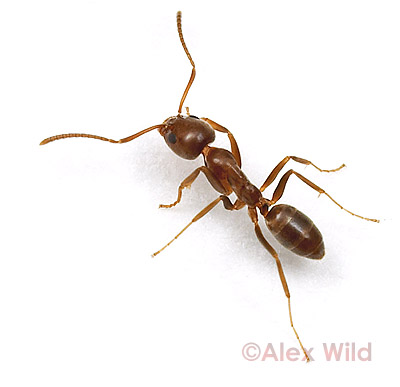Posted in Ants, Insect Links, Science, Taxonomy, tagged ecology, entomology, invasive species, Linepithema, Nature, pests on April 13, 2008|
34 Comments »

The Argentine Ant (Linepithema humile), a small brown ant about 2-3mm long, is one of the world’s most damaging insects. This pernicious ant is spreading to warmer regions around the world from its natal habitat along South America’s Paraná River. Linepithema humile can drive native arthropods to extinction, instigating changes that ripple through ecosystems. In California, horned lizard populations plummet. In South Africa, plant reproduction is disrupted. Worldwide, the Argentine ant is a persistent house and crop pest. This is not a good ant.
My Ph.D. dissertation, completed a few years ago, dealt with the taxonomy and evolution of the 20 or so mostly obscure species in Linepithema, the broader group from which the Argentine ant emerged. The project had many different aspects, but most people will only care about one small part: I figured out how to reliably identify the Argentine Ant.
The taxonomy of the Argentine Ant has been a particularly difficult problem in South America where several frustratingly similar species co-occur. Researchers who try to study L. humile in its native habitat occasionally end up working with the wrong species. That’s an embarrassing error, and one that has resulted in misinformation about the Argentine Ant spreading through the literature. I won’t bore you with the details of the thousands of Linepithema specimens I looked at to determine exactly what was and wasn’t an Argentine ant. But I will share the result, a system for separating Argentine ants from related species.
Here is how to tell if you’ve got an Argentine Ant.
(more…)
Read Full Post »














